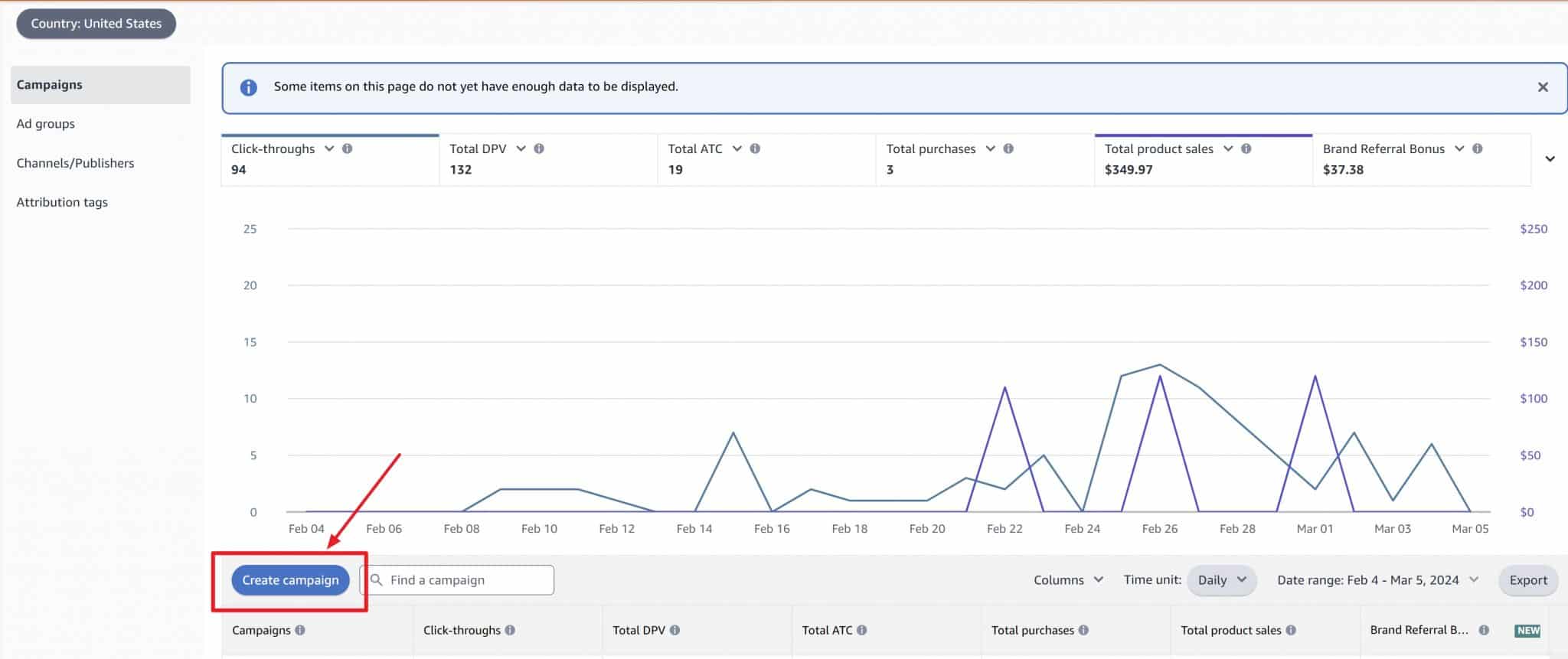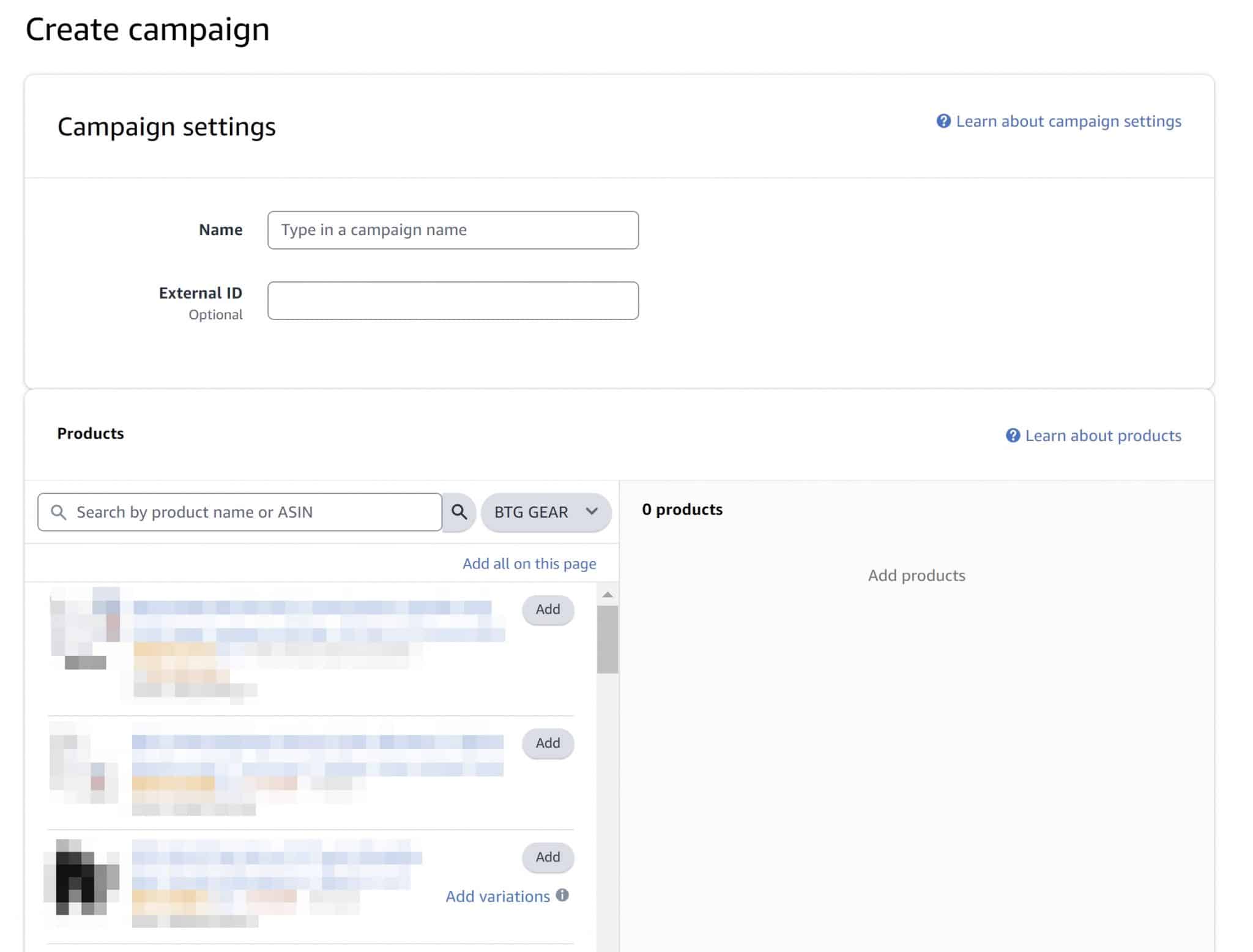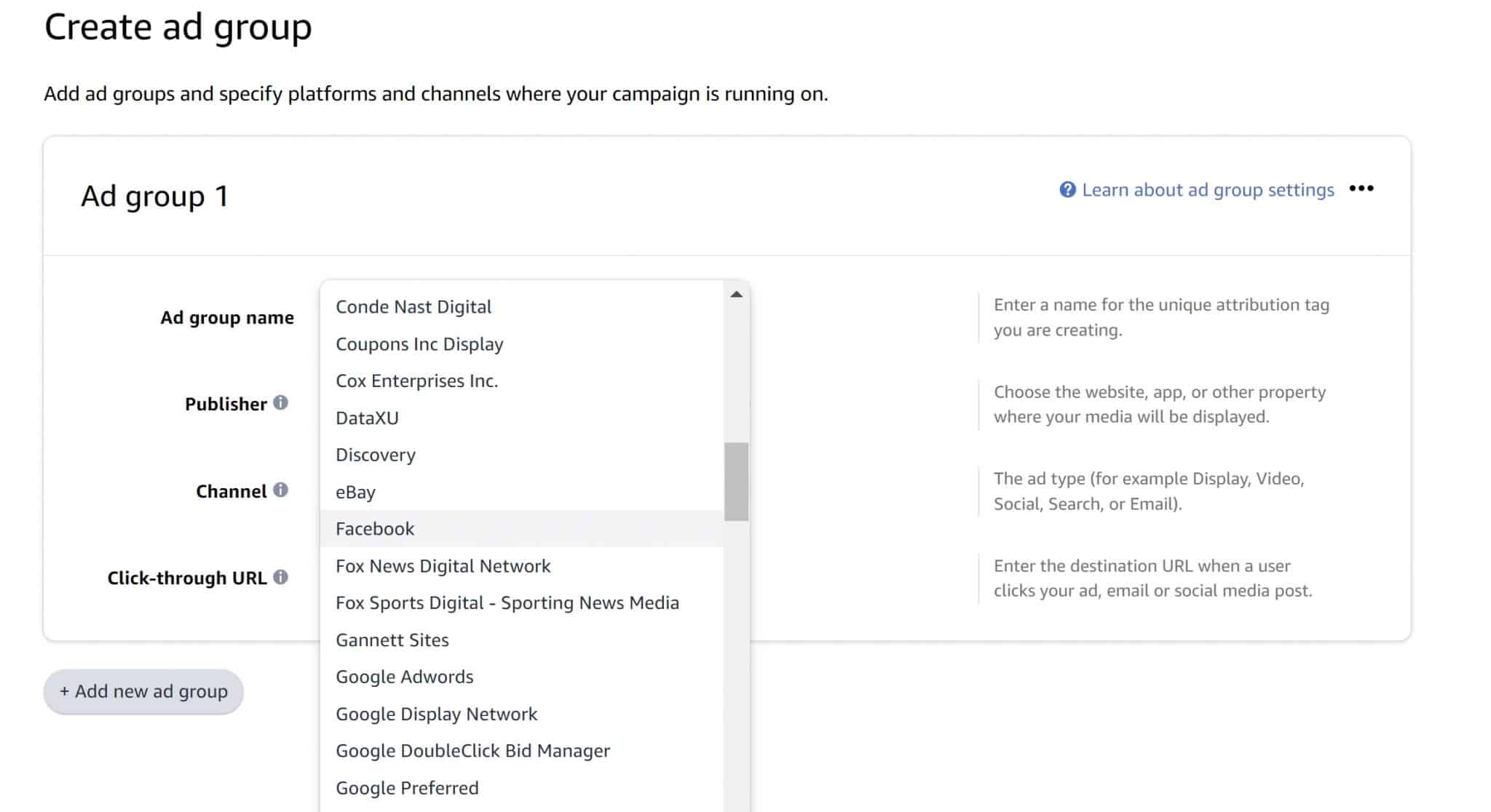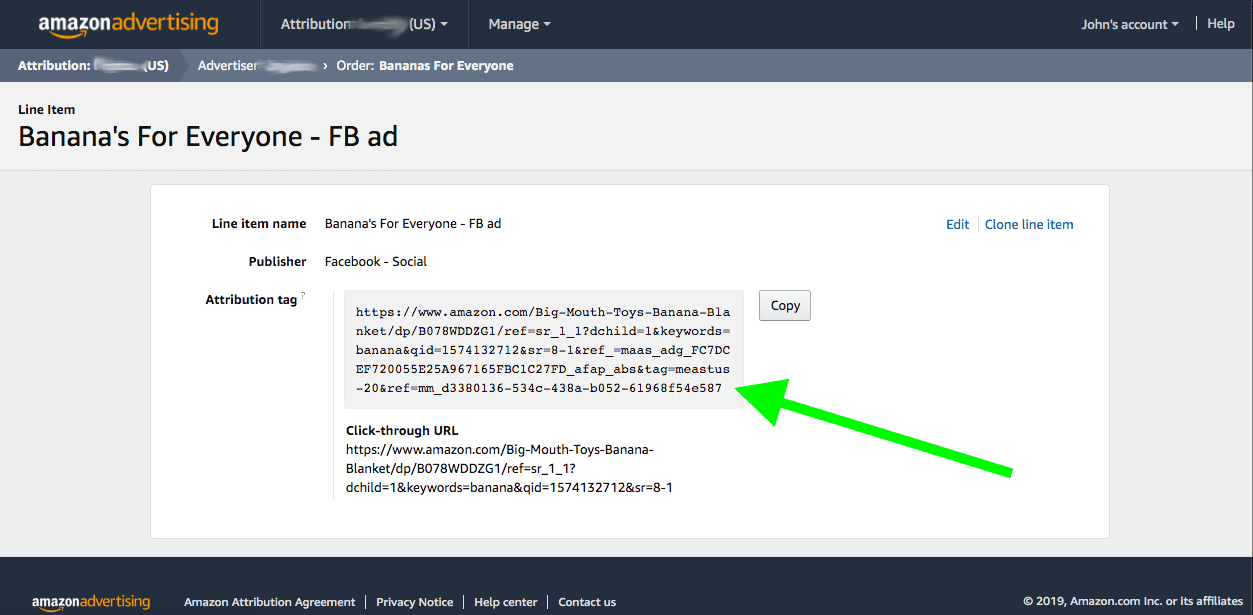What Is Amazon Attribution and How to Use It
If you’ve ever tried driving traffic from external sources to your Amazon listings to increase sales, you’ll know how frustrating it can be.
Like a digital Bermuda Triangle, once your potential customers click the link in your ad, blog post or landing page, and crossed into the Amazon ecosystem, you were pretty much left to guess whether they actually followed through and purchased.
That is until Amazon rolled out Amazon Attribution. Amazon Attribution allows you to track external traffic to Amazon to see if it converts into sales or not once that traffic hits Amazon. Better yet, Amazon also introduced a Brand Referral bonus that gives sellers a 10% referral fee on any sales sent to Amazon (more on that below as well).
In this article, I’ll talk through what Amazon Attribution is, why you need it, and how it works.
How Does Amazon Attribution Help Track External Traffic Sent to Amazon?
The biggest problem with tracking your Off-Amazon-To-Amazon marketing campaigns (before the Amazon Attribution program was around that is) is that buyers that didn’t arrive at your listing from Amazon PPC were lumped into the same pot.
So if you made 200 sales, and you knew 75 were from Amazon PPC, you were left with 125 buyers who could have come from paid ads, organic, or could have found their way to your listing from, well, anyway, there was no way you could tell.
And if you couldn’t attribute a sale to a specific piece of off-Amazon marketing there was no way to tell if it was working, or which part of your sales funnel needs to be optimized.
Why send ad traffic straight to Amazon?
- Some brands only exist on Amazon
- Even if you have your own website people may trust Amazon more
- Making sales from traffic driven to your listing from off Amazon can help boost your ranking, which increases your chance of Amazon customers purchasing, which increases your chance of sales, which increases your ranking.
The last point is worth emphasizing. There is widespread belief, although not verified by Amazon, that sending external traffic to your Amazon listings helps boost your organic rankings. We've seen it anecdotally for our brands and if you think about it, it makes sense – Amazon wants sellers to send them more traffic and sales.
Related Reading: The Amazon Flywheel
Why You Need Amazon Attribution
The clue’s in the name: Amazon Attribution allows you to finally attribute sales to your off-Amazon marketing.
So now, when someone buys, you know exactly what path they took to get to your listing.
This is huge because this data allows you to track Amazon customers throughout your entire sales funnel, kill ads that aren’t working, optimize the ones that are, and increase your overall ROI on ad spend.
What is the Brand Referral Bonus?
Amazon around 2022 introduced the Brand Referral Bonus. The Brand Referral Bonus gives you a 10% referral fee for any sales sent to Amazon from Amazon attribution links. So if you send Amazon $1000 in sales you get back $100 from Amazon.

This 10% is actually pretty considerable when you consider that Amazon gives only a fraction of this for using its Amazon Associates program (i.e. their affiliate program). The catch is that you can only use Attribution links for your own products. However, the naysayers would also argue that the 10% referral bonus is still 5% less than the average 15% referral fee you need to pay when selling something on Amazon.
Brand referral bonuses get credited automatically to your Amazon attribution links (i.e. there's no additional steps you need to take) and will be deposited directly into your Seller Central account.
Alternatives to Amazon Attribution
There are a couple of alternatives to Amazon Attribution that astute Amazon sellers have been using for some time.
Amazon Associates Tracking Links
This is the most popular way to track external link. You sign up for an Amazon associates account and create affiliate links for your external links. The affiliate revenue you receive will represent the sales you received from your external links. You can also sign-up for multiple Tracking IDs which provides one more layer of granularity.
The big advantage this technique is that you will receive affiliate revenue, typically of around 2%. This adds up quickly. The downside is that the tracking of sales is not nearly as granular as Amazon Attribution.
Pixelfy.me Links
Pixelfy.me is a service that provides external tracking for Amazon links. It can track clicks and pixel your customers BUT it cannot track sales, except through the use of an Amazon Associates affiliate code (which you can use).
Pixelfy.me allows the use of Super URLs and other Amazon algorithm manipulating URLs which can be helpful for SEO which is the big benefit of it. As mentioned, it can also pixel traffic with Facebook tracking code, but this isn't necessarily that useful unless you're putting links on a website that you don't control.
Who Can Use Amazon Attribution and How Much Is It?
Right now, Amazon Attribution is open to any third party or first party seller on Amazon that is brand registered. Amazon Attribution is part of the advertising console on Amazon.
You can access Attribution by going to Seller Central -> Advertising -> Amazon Attribution.
How Amazon Attribution Works
Paid platforms like Facebook and Google Shopping allow you to track potential customers by using a pixel.
Dropping this code on your website means they can follow them from your ad to your website and report back to you every action they take.
But that only works if you own the website. And Amazon owns Amazon, and they ain’t letting you anywhere near their website with your dirty spying pixel.
Amazon Attribution works slightly differently.
Rather than giving you a pixel they give you what Amazon call an “Attribution Tag.”
What’s an Attribution Tag?
In the words of Amazon, “Attribution tags are parameterized URLs that measure click-throughs and attribute conversions and sales of their products on Amazon.”
What that means is, an Attribution Tag is essentially a link to your product listing that Amazon can track.
You can generate that tag (or URL) in your Amazon Attribution account.
Then you simply place that link in your ad, blog post, email, or whatever, just like you would a regular link to get people to your listing.
Except now, when anyone clicks on it, Amazon can track them and let you know a number of actions that they take.
How to Create an Amazon Attribution Tag
Creating Attribution tags is pretty simple, albeit a little convoluted at first.
Step 1 – Create New Amazon Attribution Campaign
First go to https://advertising.amazon.com/attribution/ (Seller Central login required)
Hit the “Create Campaign” button.
Step 2 – Create Your Amazon Attribution Campaign Name and Choose Products
Generally, I have one campaign per product group. You could organize however you want though, i.e. one Campaign per sales channel such as having a campaign for all of your Facebook campaigns and products.
After you click Create campaign, on the next screen, click “Create Manually” (unless you actually want to bulk upload your campaigns, which you probably don't want to).
Then scroll down and enter the name of your campaign. Don't worry about External Id. Next you'll have to pick the products you want to create the links for. Again, I typically do one product per campaign.
Step 3 – Choose Your Channel & Amazon Link
The next step is where things start to get a little confusing.
For the Ad group name you can enter whatever name makes sense for you.
For Publisher pick the best approximation of where you're sending traffic from, i.e. Google, Facebook, etc. It doesn't really matter what you choose here though. It's just a traffic parameter and won't really affect anything except granularity in reporting.
Again, under Channel choose the best approximation. And again, it doesn't really matter how accurate your choice is.
The box below the Publisher drop-down says “Click-through URL.” This is the URL of the product you want to send people to. Alternatively, if you don't want to send traffic directly to an Amazon Product Display Page you could send them to an Amazon Store page and, in this case, you'd send them to that link.
Assuming you're sending them to a product page, go to Amazon, search for your product, click on the listing, copy the URL from your browser, paste it into the Click-through URL box and hit the yellow “Create” button.
And, voila, you have now created your first Amazon Attribution tag.
Simply copy and paste that longgggg link into your Facebook ad (or whatever publisher you choose from the drop-down menu) and you’re now ready to track anyone that clicks that link.
What Metrics Does Amazon Attribution Let You Track?
Once your paid ads, blog posts, social posts, emails, etc, containing your “Attribution tags” are up and running, you’ll be able to track the following actions that people take as tracked by those tags, by campaign and by ASIN:
- Amazon Detail Page views (i.e. how many people clicked through to your listing)
- Add to Cart
- Purchases
This means you’ll know exactly which of your off-Amazon marketing efforts are driving the most people to your listing, which of them are generating the most sales, and which are duds that are losing you money.
Related Listening: E189: Advanced Amazon A9 SEO Strategies
Conclusion
If you're sending external traffic to Amazon then you should definitely be using Amazon attribution for your links not only for the tracking but the 10% referral bonus.
This data will help you measure the impact of search, social, display, email, and video media channels on your Amazon sales.
You can then take those insights to take the guesswork out of what is and isn’t working in your off-Amazon digital marketing and optimize where necessary to increase your ROI.








I recently set up amazon attribution for my Facebook ads, which direct traffic to my amazon listing. I used the attribution tag from amazon and put it as the “website URL” in my facebook ad. I also put it in the URL parameters. I have 10 clicks since yesterday and in my amazon report it does not show any click-throughs. Any idea why? I also tried it without it in the URL parameters and did not see any clicks.
Great article! As an Amazon seller, I’ve been curious about Amazon Attribution and how it can help me track the effectiveness of my marketing efforts outside of Amazon. Your article provided a clear and concise explanation of what Amazon Attribution is and how it works, and I appreciate the step-by-step guide on how to set it up. It’s exciting to see that Amazon is expanding its tools for sellers to optimize their advertising campaigns and drive more sales. I’ll definitely be giving Amazon Attribution a try and I’m looking forward to seeing the results! Thanks for sharing this valuable information.
Thank you for your comment! I’m glad to hear that you found the article helpful in understanding Amazon Attribution. Best of luck!
Hey guys, thanks for the article.
Can we reuse the tags instead of creating one for each channel? Say if I generate a generic medium tag, can I pass in a parameter in the tag which captures the channel? I know its not how its supposed to be used. What I am really trying is avoiding to create an attribution tag for each combination of (campaign, channel, medium).
I don’t think Attribution will be able to recognize and autogenerated tag so if you want to tag correctly, you’ll need to setup separate URLS.
How do we create an attribution tag for an Amazon affiliate? Can you please share the steps involved?
We’re currently having Google Ads send traffic to our amazon listings, but we can’t see purchases from Google or Amazon’s end. Does Amazon allows tracking of purchase transaction made through Google Ads or do we need have any alternatives to track the purchase transaction made through Google Ads.
If someone is clicking from a Google ad through to your Amazon page and buying there, Amazon Attribution will allow tracking of this.
Hi Dave – Thx for this. Your content is some of the best. Do you know, if we create a pixelfy url from a link we make in amazon attribution, will we both pixel the clicker and track the data in the amazon attribution dashboard? I want to make a link that I can put directly in an ad that pixels the person and sends them to an amazon attribution listing.
I want to say no, but I can’t say for sure. If you test it, let me know what you find out!
Great value there, thanks a lot
Thank you, Alex! Glad to hear it helped.
Hi John. I wanted to know if the Attribution Tag and Click through URL can be used interchangeably? Can I use the Click through URL for emails?
I’m not sure but I think so.
Is this product similar to Google’s Campaign Manager or Google Analytics?